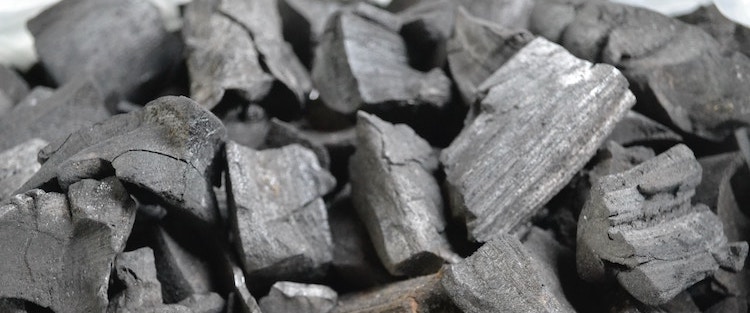Understanding The Different Types of Charcoal

The type of charcoal you use when grilling can significantly impact the taste and overall experience. With so many types of charcoal available, it’s important that you know what you are using and how it will affect your food. This article discusses five different types of charcoal, including lump charcoal, charcoal briquettes, hardwood briquettes, coconut shell charcoal, and binchotan. Each type of charcoal boasts its own set of pros and cons and unique benefits.
1. Lump Charcoal
Lump charcoal is the most natural and unprocessed form of charcoal. It is made from burning hardwood without the addition of any chemicals or binders. This results in a purer, cleaner burn that imparts a distinct smoky flavor to your grilled food.
Pros of Lump Charcoal:
- Burns hotter and faster than other types of charcoal
- Produces less ash
- Adds a natural, smoky flavor to food
- Made from a renewable resource
Cons of Lump Charcoal:
- Can be more expensive than other types of charcoal
- Inconsistent sizes and shapes can make it difficult to control heat
- Burns faster, requiring more frequent refueling
Recommended product: Big Green Egg Premium Natural Charcoal
2. Charcoal Briquettes
Charcoal briquettes are made from a combination of ground charcoal, binders, and additives. They are uniform in size and shape, making them a popular choice for consistent heat distribution.
Pros of Charcoal Briquettes:
- Affordable and widely available
- Consistent size and shape make it easy to control heat
- Long-lasting burn time
Cons of Charcoal Briquettes:
- May contain chemicals and additives
- Produces more ash than lump charcoal
- Can impart a chemical taste to food if not properly lit
Check out our charcoal starters & smoking woods collection for more options.
3. Hardwood Briquettes
Hardwood briquettes are similar to charcoal briquettes, but they are made exclusively from hardwood sawdust and wood chips. You will receive a cleaner burn and a more authentic wood-smoked flavor as a result.
Pros of Hardwood Briquettes:
- Burns hotter and longer than regular charcoal briquettes
- Made from a renewable resource
- Imparts a wood-smoked flavor to food
Cons of Hardwood Briquettes:
- Can be more expensive than regular charcoal briquettes
- Produces more ash than lump charcoal
4. Coconut Shell Charcoal
Coconut shell charcoal is made from the shells of coconuts, making it an eco-friendly alternative to traditional charcoal. It burns cleanly and efficiently and produces minimal smoke and ash.
Pros of Coconut Shell Charcoal:
- Eco-friendly and sustainable
- Burns longer and hotter than traditional charcoal
- Produces less ash and smoke
Cons of Coconut Shell Charcoal:
- Can be more expensive than other types of charcoal
- May be difficult to find in some areas
5. Binchotan
Binchotan, also known as white charcoal, is a traditional Japanese charcoal made from oak. It is known for its incredibly long burn time and ability to produce high, consistent heat.
Pros of Binchotan:
- Long-lasting and slow burning
- Produces intense, consistent heat
- Almost smokeless and odorless
Cons of Binchotan:
- Can be very expensive
- Takes longer to light than other types of charcoal
- May be difficult to find in some areas
Hopefully, now that you have a better understanding of the different types of charcoal, you can choose the charcoal that best suits your grilling needs and preferences. The type of charcoal you use can greatly affect the flavor and quality of your grilled food, so it’s important to experiment and find the one that works best for you.
For more tips and tricks on grilling with charcoal, check out our article on 10 Tips for Grilling with Charcoal. And don’t forget to explore our charcoal starters & smoking woods collection for all your grilling essentials.
Happy grilling!
FAQ About Charcoal
The five different types of charcoal discussed in this article are lump charcoal, charcoal briquettes, hardwood briquettes, coconut shell charcoal, and binchotan. Their primary use is for grilling and smoking, with each type offering unique characteristics in terms of heat output, burn time, and flavor.
The main differences between various charcoals lie in their composition, burn time, heat output, and flavor imparted to the food. Some charcoals are made from pure hardwood, while others may contain binders and additives.
The best type of charcoal depends on your personal preferences and grilling needs. Lump charcoal is ideal for high heat and quick cooking, while briquettes provide consistent heat for longer cook times. Experiment with different types to find the one that works best for you.
Charcoal briquettes are a good choice for beginners, as they offer consistent heat and are easy to control.
Yes, the type of charcoal you use can affect the flavor, cooking time, and overall grilling experience. Experiment with different types to find the one that works best for your needs.
Lump charcoal is great for high heat and quick cooking, while briquettes offer consistent heat for longer cook times. Choose based on your grilling preferences and the type of food you’re cooking.
Hard, medium, and soft charcoal refer to the hardness and density of the wood used to make the charcoal. Hard charcoal typically burns hotter and longer, while soft charcoal produces less heat and burns more quickly.
Charcoal grades vary based on the quality and purity of the materials used. High-quality charcoal, like binchotan, is made from dense hardwood and burns at a high temperature. Lower-grade charcoals may contain more additives and produce more ash and smoke.
Among the types discussed in this article, binchotan, also known as white charcoal, burns the hottest and provides consistent, high heat.
